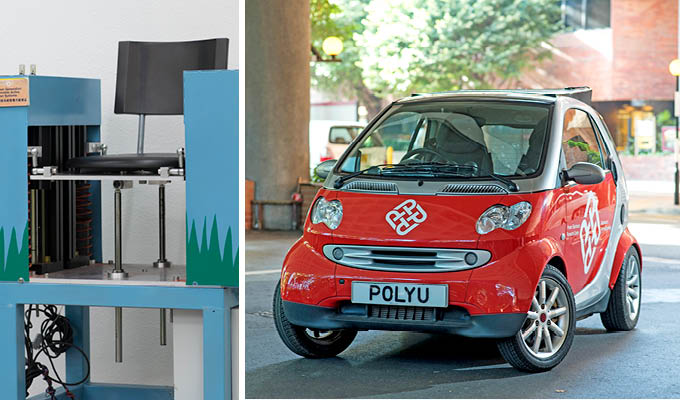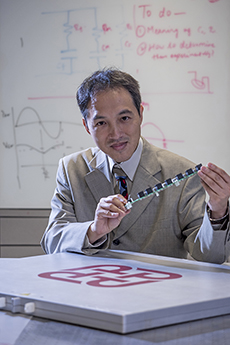Apart from determining a vehicle’s stability, comfortability and safety, do suspension systems have other functions? In this issue, Prof. Eric Cheng Ka-wai at the Department of Electrical Engineering talked about PolyU’s latest technological advancement in energy-storage suspension system.
What is the latest technological advancement in the energy-storage suspension system at PolyU?
With the support of Innovation and Technology Fund, my research team has developed the “Direct-drive linear switched reluctance actuator” that can improve the performance of a vehicle’s suspension system and recycle the energy generated from the system. Recently, the invention won a gold medal at the 2016 International Invention Innovation Competition in Canada (iCAN).
How is this system different from conventional vehicle suspension systems?
Designed with electromagnetic induction feature, this system can easily adjust the horizontal level of vehicle seats, enhancing riding comfort and stability. Compared with the conventional design, this system has no hydraulic and mechanical parts and, therefore, greatly shortens the response time. It can also generate control forces to quickly absorb road shocks and suppress vibration, thus ameliorating both ride safety and comfort. More importantly, it can recycle the energy generated from the suspension and charge the vehicle’s battery.
How does the suspension help store energy?
When the vehicle travels over bumps, the suspension system oscillates and some of the resulting oscillation energy is absorbed by the system, whereas conventionally that oscillation energy is always dissipated. Our “Direct-drive linear switched reluctance actuator” can recycle and store the energy generated from suspension and vibration to charge the vehicle’s battery.
How is the performance of the system?
In our laboratory test, this system can generate 50 to 300 watts of electricity. For instance, PolyU-developed electric car “mycar” consumes 5% less electricity when riding with this system in rural areas.
Is there any further development of this technology?
Our invention can also be further applied in boats. We plan to collaborate with a boat supplier to install this electromagnetically-induced suspension system on the seats of Hong Kong’s first electric boat. In fact, this system can be installed in movable parts of any modes of transport, such as the seats and doors of trains and airplanes.

